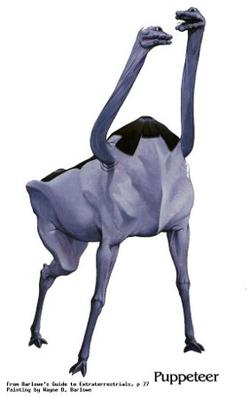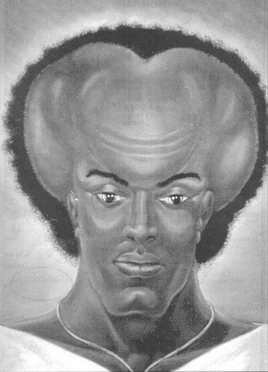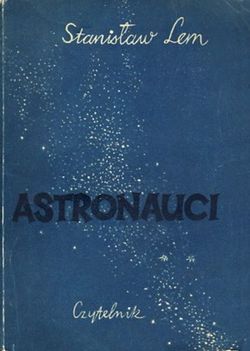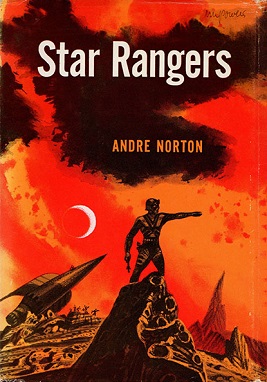In the Platonic, Neopythagorean, Middle Platonic, and Neoplatonic schools of philosophy, the demiurge is an artisan-like figure responsible for fashioning and maintaining the physical universe. The Gnostics adopted the term demiurge. Although a fashioner, the demiurge is not necessarily the same as the creator figure in the monotheistic sense, because the demiurge itself and the material from which the demiurge fashions the universe are both considered consequences of something else. Depending on the system, they may be considered either uncreated and eternal or the product of some other entity.

Ancient astronauts refers to a pseudoscientific set of beliefs that hold that intelligent extraterrestrial beings visited Earth and made contact with humans in antiquity and prehistoric times. Proponents of the theory suggest that this contact influenced the development of modern cultures, technologies, religions, and human biology. A common position is that deities from most religions are extraterrestrial in origin, and that advanced technologies brought to Earth by ancient astronauts were interpreted as evidence of divine status by early humans.

Pierson's Puppeteers, often known just as Puppeteers, are a fictional alien race from American author Larry Niven's Known Space books. The race first appeared in Niven’s novella Neutron Star.

Red Star is a science fiction novel by Russian writer Alexander Bogdanov, published in 1908, about a communist society on Mars. The first edition was published in St. Petersburg in 1908, before eventually being republished in Moscow and Petrograd in 1918, and then again in Moscow in 1922. Set in early Russia during the Revolution of 1905 and additionally on a fictional socialist society on Mars, the novel tells the story of Leonid, a Russian scientist-revolutionary who travels to Mars to learn and experience their socialist system and to teach them of his own world. In the process, he becomes enamored of the people and technological efficiency that he encounters in this new world. An English translation by Charles Rougle was published in 1984.
The Noon Universe is a fictional future setting for a number of hard science fiction novels written by Arkady and Boris Strugatsky. The universe is named after Noon: 22nd Century, chronologically the first novel from the series and referring to humanity reaching its noon in the 22nd century.

Yakub is a figure in the mythology of the Nation of Islam (NOI) and the NOI's offshoots. According to the NOI's doctrine, Yakub was a black scientist who lived 6,600 years ago and began the creation of the white race through a form of selective breeding, referred to as "grafting", while he was living on the island of Patmos.

The Scrameustache is a fictional character in a science-fiction Franco-Belgian comics series of the same name. He was created by the Belgian artist Gos. Gos has written and drawn all the Scrameustache's adventures since 1972. Since the mid-1980s he has been assisted by his son Walt. Another son, Benoit has contributed as colourist. It is a popular, ongoing series.

Sleepers of Mars is a collection of five early stories by British writer John Wyndham, as by John Beynon Harris, published after his death, in 1973 by Coronet Books.

Noon: 22nd Century is a 1961 science fiction book by Arkady and Boris Strugatsky that was expanded in 1962 and further in 1967 and translated into English in 1978. It is sometimes considered an episodic novel, a collection of linked short stories or a fix-up since some parts had been published as independent short stories. The novel relates several stories of the 22nd century and provides the background "feeling" for the style of life which gave birth to the Noon Universe.

Far Rainbow is a 1963 science fiction novel by Soviet writers Boris and Arkady Strugatsky, set in the Noon Universe.
Space Mowgli, also known as The Kid, is a 1971 science fiction novel by Russian writers Boris and Arkady Strugatsky, set in the Noon Universe.

Space Apprentice, also known as Probationers, is a science fiction novel by the Soviet writers Arkady and Boris Strugatsky. Originally published in 1962, it is set in the Noon Universe after The Land of Crimson Clouds and "Destination Amalthea" amd hundreds of years before the other Noon novels.

Northworld is a 1990 militaristic science fiction novel by David Drake set in a time when the Consensus rules everything except for Northworld, the missing planet. It is the first novel in the Northworld Trilogy. The other novels of the trilogy are Vengeance (1991) and Justice (1992).

The Astronauts is the first science fiction novel by Polish writer Stanisław Lem published as a book, in 1951.

Ancient astronauts have been addressed frequently in science fiction and horror fiction. Occurrences in the genres include:

Kingdoms of the Wall is a 1992 science fiction novel by American writer Robert Silverberg. It is set on a faraway planet inhabited by an alien race and in an undefined future. Its subject is the perpetual communal quest for knowledge in the face of hardship and wonders, which through the revelation of an unexpected and devastating truth results in the deconstruction and slaying of gods.

Galactic Derelict is a science fiction novel by American writer Andre Norton, the second in her Time Traders series. It was first published in 1959, and as of 2012, had been reprinted in eight editions. It is part of Norton's Forerunner universe.

Star Rangers, also known as The Last Planet, is a science fiction novel by the American author Andre Norton. The novel was published on August 20, 1953, by Harcourt, Brace & Company. This is one of Norton's Central Control books, which lay out the history of a galactic empire through events suggested by Norton's understanding of Terran history.

Clay's Ark (1984) is a novel by American science fiction author Octavia E. Butler. The last published of her Patternist series, the novel serves as a prequel that accounts for the arrival of the Clay Ark disease that leads to the evolution of clayarks, the mutants that threaten human survival in the series debut novel, 1976's Patternmaster, and 1978's Survivor, which Butler later disavowed.

"Black Destroyer" is a science fiction short story by Canadian-American writer A. E. van Vogt, first published in Astounding SF in July 1939. It has been marked as the story that represents the start of the Golden Age of Science Fiction.

















